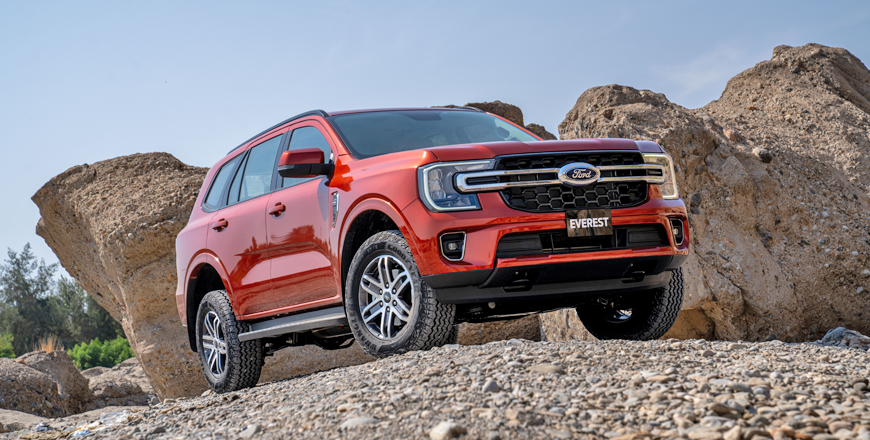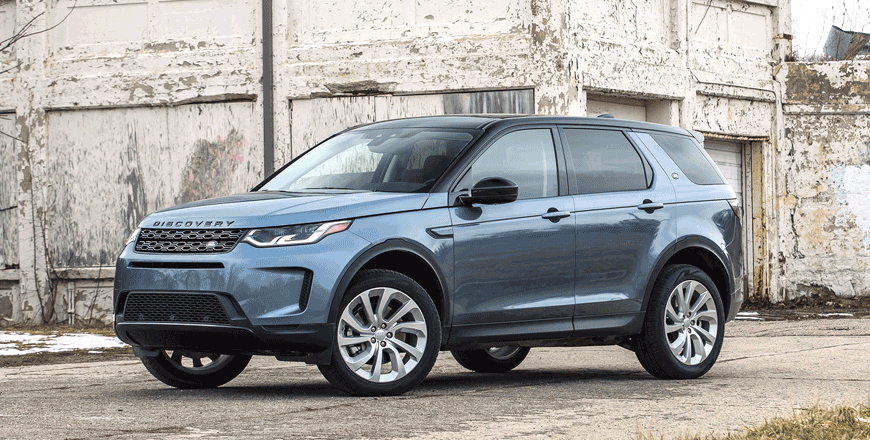You are here
Great expectations: Ford Everest, Range Rover and Peugeot Landtrek
By Ghaith Madadha - Jan 24,2022 - Last updated at Jan 24,2022
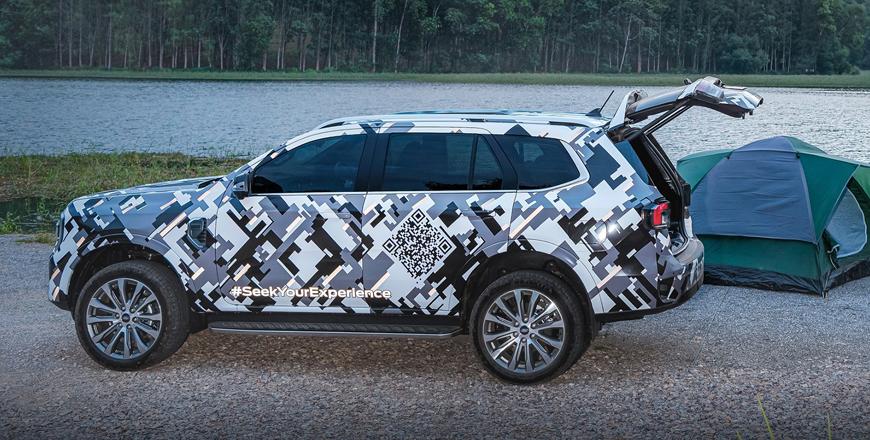
Photos from top to bottoem respectively courtesy of Ford, Land Rover and Peugot
With alternating combinations of model and production delays contrasting with accelerated rollout of electric concepts on the one hand, and slow sales or low supply, depending on different markets during the last couple of years, 2022 perhaps promises to be a perhaps more interesting motoring year.
Of the many cars expected internationally, regionally and locally in coming months, the Ford Everest, Land Rover Range Rover and Peugeot Landtrek are three similarly off-road capable vehicles to look forward to, at very different price points, market positions and segments of the automotive landscape.
Ford Everest
Traditionally available only in Australia, South Africa and certain Asian markets, all indications are that the Ford Everest will soon be launched in the Middle East for the first time. Currently in its final testing phase with a full reveal expected early this year, the Everest’s imminent arrival to the region was hinted at by news of the new generation Everest’s progress and camouflaged images being sent out by, and appearing on the brand’s regional website, which was echoed by a brief post in Arabic, on the manufacturer’s Facebook page.
Expected to arrive to the region soon after the upcoming un-camouflaged reveal and introduction to established markets, it, however, remains unknown when this will happen, in which countries it will be sold and in what specification. Strongly expected is that it will be petrol-powered for the Middle East, rather than diesel, with a 2- or 2.3-litre turbocharged four-cylinder engine, like the outgoing model. A V6 engine version is, meanwhile, not off the table and might be possible, given that the next generation Ford Ranger pick-up truck — with which the Everest shares a platform — will accommodate this configuration.
A ruggedly built SUV with body-on-chassis construction and expected rear live axle and low ratios, the new Everest promises to be a thoroughly capable off-roader, ideally suited — and one hopes is earmarked — for Jordan, and not just Gulf-oriented model, like the recently released, more stylised, off-road enthusiast oriented and also Ranger-related Ford Bronco. With a stiffer wagon body, the Everest is expected to trade its Ranger donor’s rear leaf springs for coil springs to deliver improved handling and comfort. A bridge between Bronco and Ranger, the Everest will likely compete with similar truck-related SUVs like the Nissan Xterra and Toyota Fortuner.
Land Rover Range Rover
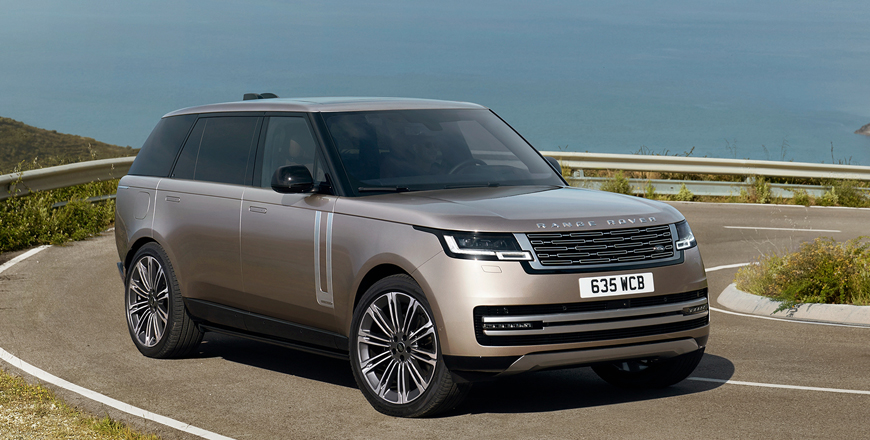
First unveiled late last year, the latest fifth generation Range Rover made its debut in Jordan late last month at a brief viewing event. Expected to go on sale in Jordan during the second quarter of this year, the new full-size Range Rover is only slightly larger than its predecessor but is the most luxurious and technologically advanced to date. Land Rover’s flagship model, the Range Rover has often been seen as the go-to luxury SUV nameplate.
Serving a similar role in the SUV market as the Mercedes-Benz S-Class in the saloon car segment, the fifth generation Range Rover is the most expensive incarnation yet. Noticeably less aggressive and arguably less viscerally emotive than its predecessor’s subtly sporty styling sensibility, the new Range Rover emphasises a softer edged, more elegantly stately aesthetic with smoother surfacing, in what seems like a pitch to better compete against the Mercedes-Maybach GLS-Class and more up-market ultra-luxury Rolls Royce Cullinan and Bentley Bentayga SUVs.
Offered with various engines, the range-topping model, however, sadly ditches its predecessor’s charismatic, long-serving and in-house developed supercharged 5-litre V8 for a BMW-sourced twin-turbo 4.4-litre V8, while 6-cylinder models replace the outgoing V6 with a smoother in-line design. Expectedly capable off-road for owners who’d risk such potentially expensive adventurism, the new Range Rover is, meanwhile, packed to the rafters with comfort, convenience, safety, assistance and infotainment tech and equipment, including four-wheel-steering to mitigate its larger size and for enhanced, handling, stability and manoeuvrability.
Specifications: Land Rover Range Rover – P400
Engine: 3-litre, MHEV, turbo-charged 6-cylinders
Gearbox: 8-speed automatic, four-wheel-drive
Power, BHP (PS) [kW]: 395 (400) [295] @5,500rpm
Torque, lb/ft (Nm): 406 (550) @2,000-5,000rpm
0-100km/h: 5.8-seconds
Top speed: 242km/h
Fuel consumption: 9.5-10.2-litres/100km
Length: 5,052mm
Width: 2,047mm
Height: 1,870mm
Wheelbase: 2,997mm
Ground clearance: 295mm
Water fording: 900mm
Weight: 2,454kg
Suspension: Double wishbone/multi-link
Peugeot Landtrek
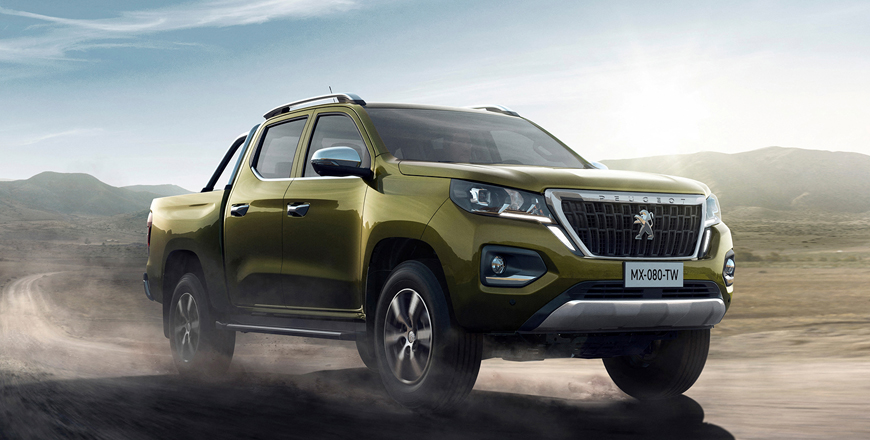
First launched in Latin American and sub-Saharan African markets in late 2020, the Peugeot Landtrek pick-up truck was recently spotted in double cab, high riding guise at the French brand’s new, yet-to-be officially announced, Jordanian dealership. A departure from recent up-market passenger car offerings, the personal and work use Landtrek is expected to straddle the line with Peugeot’s commercial vehicle line, and is anticipated to go on sale in Jordan in coming months, once the official importer opens for business.
A durable mid-size truck built in and rear- and four-wheel-drive guises, efficient turbo-diesel engine and high ground clearance, the Landtrek is ideally suited for developing markets. Picking up where the tough Peugeot 504 saloon, estate and pick-up long left off, as rugged workhorses popular in developing markets, the Landtrek is instead a more dedicated vehicle, developed in collaboration with Chinese manufacturer, Changan and its Kaicene F70 version. Meanwhile inside, the Landtrek features optional three-passenger front bench and stylish, well-equipped and upmarket top spec cabin.
Assertively-styled with big grille and sculpted surfacing, the Landtrek’ initial engine options include a pair of turbocharged four-cylinders, including 207BHP 2.4-litre petrol and 147BHP 1.9-litre Diesel, but Jordanian specification remains unconfirmed. With lesser engines also expected, the Landtrek is offered with 6-speed manual or automatic transmission, low ratio transfer and locking rear differential. Using rugged body-on-frame construction and double wishbone front and live axle and leaf spring rear suspension, the Landtrek’s towing, cargo and off-road abilities are promising.
Specifications: Peugeot Landtrek – 1.9D Double Cab 4x4
Engine: 1.9-litre, turbo-diesel 4-cylinders
Gearbox: 6-speed automatic, four-wheel-drive
Power, BHP (PS) [kW]: 147 (150) [110] @4,000rpm
Torque, lb/ft (Nm): 256 (350) @1,800-2,800rpm
0-100km/h: 15.8-seconds
Top speed: 171km/h
Fuel consumption: 9.1-litres/100km
Length: 5,330mm
Width: 1,963mm
Height: 1,897mm
Wheelbase: 3,180mm
Ground clearance: 235mm
Water fording: 600mm
Weight: 2,095kg
Payload: 1,015kg
Suspension, F/R: Double wishbone/live axle, leaf spring
Related Articles
A rugged but refined SUV with plenty of practicality and authentic off-road ability, the Ford Everest may be a well known quantity in Austra
A more affordable and family-oriented Land Rover SUV with compact dimensions and plenty of practicality, the Discovery Sport was at home bot
The most important date on the regional motoring calendar for motoring enthusiasts and automotive industry professionals, the Dubai Motor Sh


